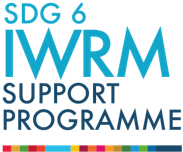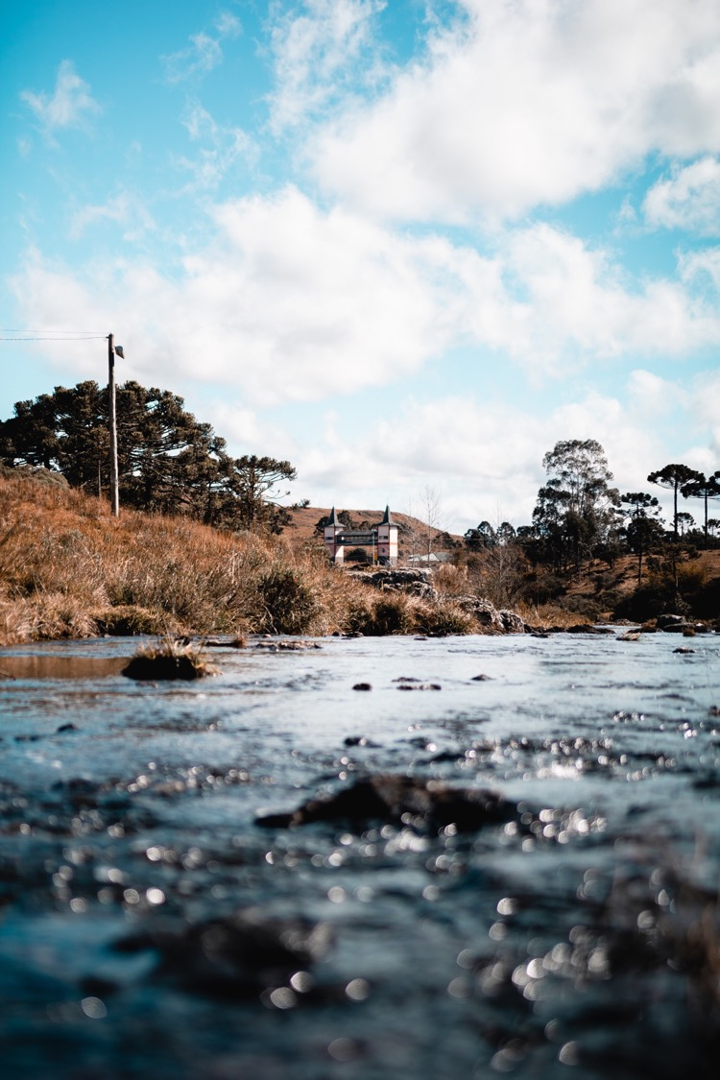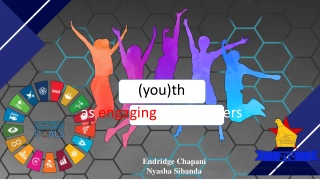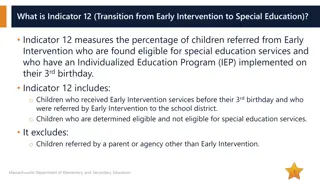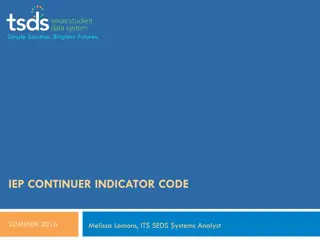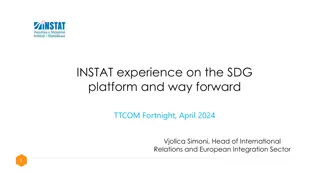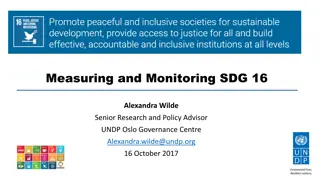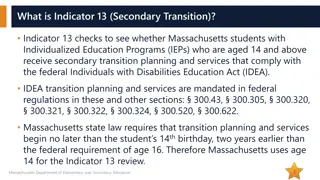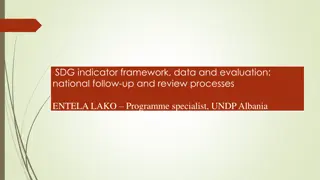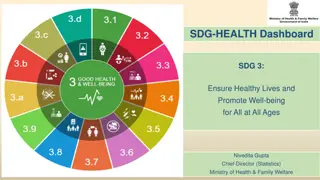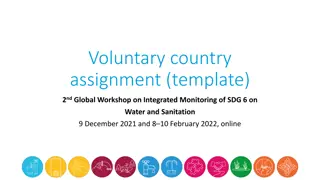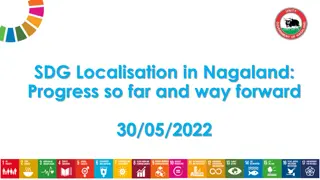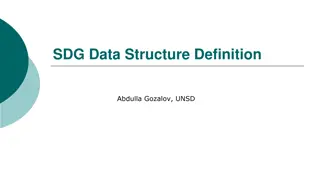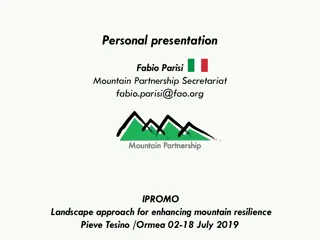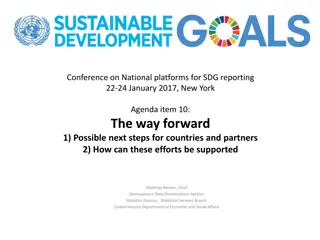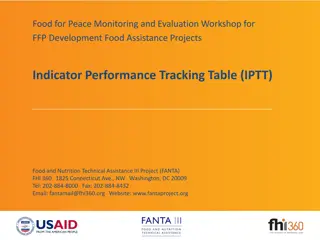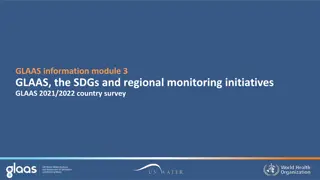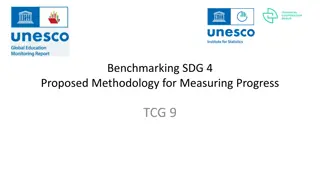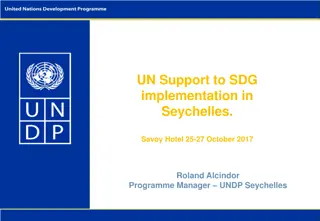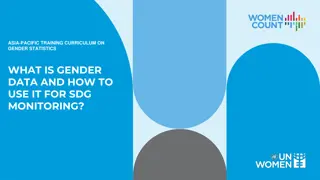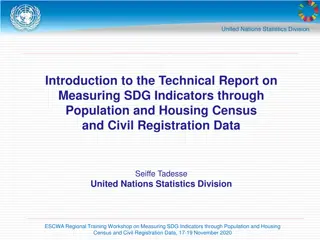SDG Indicator 6.5.1 Implementation & Monitoring 2023 Overview
Implementing Integrated Water Resources Management (IWRM) in the context of SDGs, with progress reports and stakeholder engagement. Access monitoring guides for SDG 6 Indicator 6.5.1. Discover the timeline for reporting in 2023, including stakeholder consultation processes. Participate in the SDG 6.5.1 survey to measure IWRM implementation. Get details on the support program and the push to accelerate progress. The UN Environment Programme leads Indicator 6.5.1 monitoring.
Download Presentation

Please find below an Image/Link to download the presentation.
The content on the website is provided AS IS for your information and personal use only. It may not be sold, licensed, or shared on other websites without obtaining consent from the author. Download presentation by click this link. If you encounter any issues during the download, it is possible that the publisher has removed the file from their server.
E N D
Presentation Transcript
SDG indicator 6.5.1 Implementing integrated water resources management (IWRM) 2023 monitoring and reporting overview March 2023
Contents 1. Background: IWRM reporting in the context of the SDGs 2. 3. 4. 5. 6. Timeline, Help Desk and Monitoring Guide SDG 6.5.1 Survey Overview Stakeholder consultation process for 6.5.1 reporting SDG 6 IWRM Support Programme 6.5.1 progress and the need to accelerate
SDG indicator 6.5.1: Implementing IWRM 2023 monitoring and reporting overview Part 1 IWRM reporting in the context of the SDGs March 2023
The 2030 Agenda and SDG 6 12 indicators, 8 targets measure progress towards SDG 6.
Sustainable Development Goal (SDG) 6 Ensure availability and sustainable management of water and sanitation for all Target 6.5: By 2030, implement integrated water resources management at all levels, including through transboundary cooperation as appropriate. Indicator 6.5.1: Degree of integrated water resources management (IWRM) implementation Indicator 6.5.2: Proportion of transboundary basin area with an operational arrangement for water cooperation The United Nations Environment Programme (UNEP) is the custodian agency for indicator 6.5.1
SDG indicator 6.5.1: Implementing IWRM 2023 monitoring and reporting overview Part 2 Timeline, Help Desk, Monitoring Guide March 2023
Timeline for reporting 2023 Countries confirm 6.5.1 Focal Points Submission of final draft to UNEP All country submissions finalised April - September October November February March 1 October. December Mid-April: Roll-out survey and supporting material Quality assurance and finalization *Submission to UN Statistics Division in early 2024 See Monitoring Guide section 6
SDG 6.5.1 Help Desk Any questions related to 6.5.1 reporting Quality Assurance(QA): "interim" draft reports are encouraged, and feedback will be provided to complete your draft submission. Submit final drafts to the Help Desk Questions about the SDG 6 IWRM Support Programme iwrmsdg651@un.org.
SDG 6.5.1 Help Desk Julian Serafin Lisbet R Hansen Paul Glennie Maija Bertule Focal Points are encouraged to reach out to the Help Desk team: iwrmsdg651@un.org
Monitoring Guide IWRM Data Portal http://iwrmdataportal.unepdhi.org/
SDG indicator 6.5.1: Implementing IWRM 2023 monitoring and reporting overview Part 3 SDG 6.5.1 Survey March 2023
SDG Indicator 6.5.1 Survey Overview
How to respond to the survey questions Build on 2017 & 2020 reporting Give scores in increments of 10, from 0 100 (i.e. 0, 10, 20, 30, 40, 50, 60, 70, 80, 90, or 100). 6 threshold descriptions to guide scoring (each question). Complete free-text fields: Status and progress and Way forward (each question). Respond to all questions (no blanks). Pay close attention to all explanatory text and footnotes. Pay close attention to all explanatory text and footnotes.
Survey question example Section (1-4) Thresholds and descriptions Sub-section (1.1, 1.2 etc.) Question (a, b, c, etc.) 1. Enabling Environment Degree of implementation (0 100) Medium-low (40) Medium-high (60) Very low (0) Low (20) High (80) Very high (100) 1.1 What is the status of policies, laws and plans to support Integrated Water Resources Management (IWRM) at the national level? a. National water resources policy, or similar. not progressing. starting to be used by authorities to guide work. Status and progress: xxx Enter score in increments of 10 (or n/a) Development not started or Exists, but not based on IWRM. Based on IWRM, approved by government and Based on IWRM, being used by the majority of relevant authorities to guide work. Policy objectives consistently achieved. Objectives consistently achieved, and periodically reviewed and revised. Score XX [E.g. policy(ies), key years, examples of how the policy is being used to guide work, and which policy objectives are monitored/achieved. Consider progress since previous reporting rounds .] Way forward: xxx [E.g. planned or recommended activities to advance implementation of policies; barriers and enablers; draft interim targets where appropriate.] Enter free text in Status and progress' and Way forward fields. Helps: reach consensus in country; track progress over time; objectivity.
Annexes A: Glossary B: Key priorities and targets for IWRM implementation C: Country reporting process form To improve transparency in reporting
Key changes from 2020 survey Fewer annexes (from 5 to 3) Target-setting introduced (Annex B) Climate change considerations strengthened: dedicated free-text fields for 5 questions More explicit links to other SDG 6 indicators Accountability mechanisms included New "Gender Checklist" (supporting materials)
Support for completing the survey Primary guidance within Survey and Monitoring Guide. Additional Supporting Materials: Survey overview Calculation template Gender checklist Online IWRM Survey tool (optional)
SDG indicator 6.5.1: Implementing IWRM 2023 monitoring and reporting overview Part 4 Stakeholder Consultation Processes for 6.5.1 reporting See also: Monitoring Guide ; Stakeholder Consultation Manual March 2023
Stakeholder Consultations Why? More robust and accurate reporting Shared understanding of key priorities Useful national instrument for IWRM planning and implementation Responsibility:National SDG 6.5.1 Focal Point leads process (supported by team, potentially including a facilitator) Considerations: i. Stakeholder types: who and how? ii. Sequencing: series/parallel/mix iii. Formats: in-person/online/hybrid iv. Best practices
i. Potential stakeholder groups Government authorities (across sectors and levels) Basin and aquifer level organisations Other groups: community groups, water user associations, private sector, NGOs, environmental organizations, water resources management practitioners, academia Other SDG focal points Consider representation / expertise on vulnerable groups and gender. Aim to be as consultative as possible, considering budget, time, resources.
ii. Sequencing Series approach: consecutive drafts developed with different stakeholder groups. Parallel approach: different stakeholder groups fill out blank survey, responses analysed by Focal Point, then consensus reached on scores. Combination of both. Final sign-off at national level, before submission.
iii. Engagement formats Online IWRM Survey tool In-person consultations Online consultations Hybrid Other: email / phone / webinars Consider: budget, time, resources Optional tool that can be used by Focal Points to collect stakeholder inputs prior to consultations. The tool can be shared with stakeholders in advance of consultations and inputs will be sent directly to the FPs. The online tool is not a replacement for the official country submission (MS Word format). LINK
iv. Best practices Inclusion Procedural fairness Agreement by consensus Transparency See Stakeholder Consultation Manual
Optional supporting materials for stakeholder consultations In addition to the Monitoring Guide: Stakeholder Consultation Manual Country results summary (2 pager) Facilitators training course (EN/FR/ES) Support Package (technical / financial support)
SDG indicator 6.5.1: Implementing IWRM 2023 monitoring and reporting overview Part 5 SDG 6 IWRM Support Programme www.gwp.org/en/sdg6support/ March 2023
Stage 1: strengthening stakeholder consultation in 6.5.1 reporting >70 countries supported in 2017 & 2020. >3,000 stakeholders engaged
Stage 1: Partnership approach to identify challenges Support available Financial assistance: to engage Facilitator , conduct consultations (60 countries) Selection criteria Country commitment Country co- financing (if feasible) IWRM status Technical guidance: open source, available to all countries (e.g. Support Package) Find out more, email: sdg6iwrmsp@gwp.org www.gwp.org/en/sdg6support/consultations/where-we-are/stage-1-activities/
Regional learning exchanges Objectives: Share lessons from consultation process between focal points Identify common challenges and opportunities to advance IWRM implementation at regional level (with the possibility of leading to the production of regional reports, after national reporting) Assistance available: SDG 6 IWRM Support Programme: Facilitation support, technical guidance (through global teams, GWP Regional Water Partnerships, Country Water Partnerships) Use of online tools including communities of practice No financial support available
Stage 2: Formulating responses Government-led multi-stakeholder process to formulate and prioritise responses to IWRM challenges. Develop an IWRM Action Plan (or similar) Only countries that have received Stage 1 support are eligible for Stage 2 from 2024 onwards. https://www.gwp.org/en/sdg6support/consultations/where-we-need-to-go/stage-2-activities/
Stage 3: Implementing solutions Assist governments to implement the IWRM Action Plans: Build new / strengthen existing multi- stakeholder partnerships Identify financing opportunities and prepare countries to access finance Gaining access to technical assistance and best practices from other countries https://www.gwp.org/en/sdg6support/consultations/getting-there/stage-3-activities/
SDG indicator 6.5.1: Implementing IWRM 2023 monitoring and reporting overview Part 6 SDG 6.5.1 progress and the need to accelerate March 2023
6.5.1 IWRM reporting to date (2017, 2020) 2017 186 countries reported on indicator 6.5.1 (2017, 2020). 87 countries low or medium-low IWRM implementation (in 2020) = unlikely to reach 2030 target. 2020
Recap: Useful links to resources IWRM DATA PORTAL SDG 6.5.1 HELP DESK SDG 6 IWRM SUPPORT PROGRAMME SUPPORT PROGRAMME http://iwrmdataport al.unepdhi.org iwrmsdg651@un.org sdg6iwrmsp@gwp.org https://www.gwp.or g/en/sdg6support/





